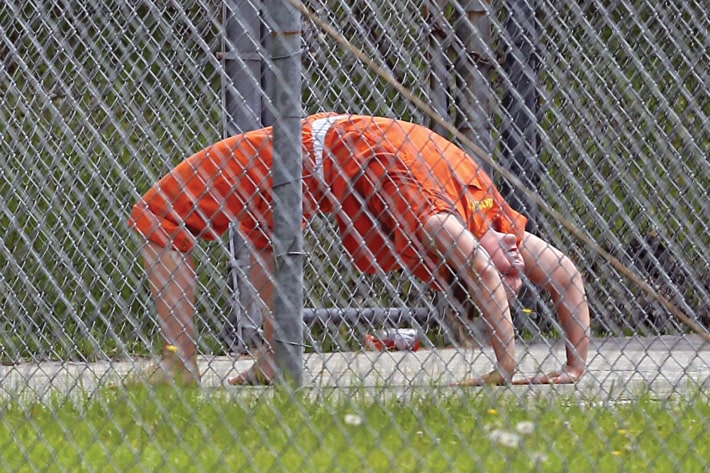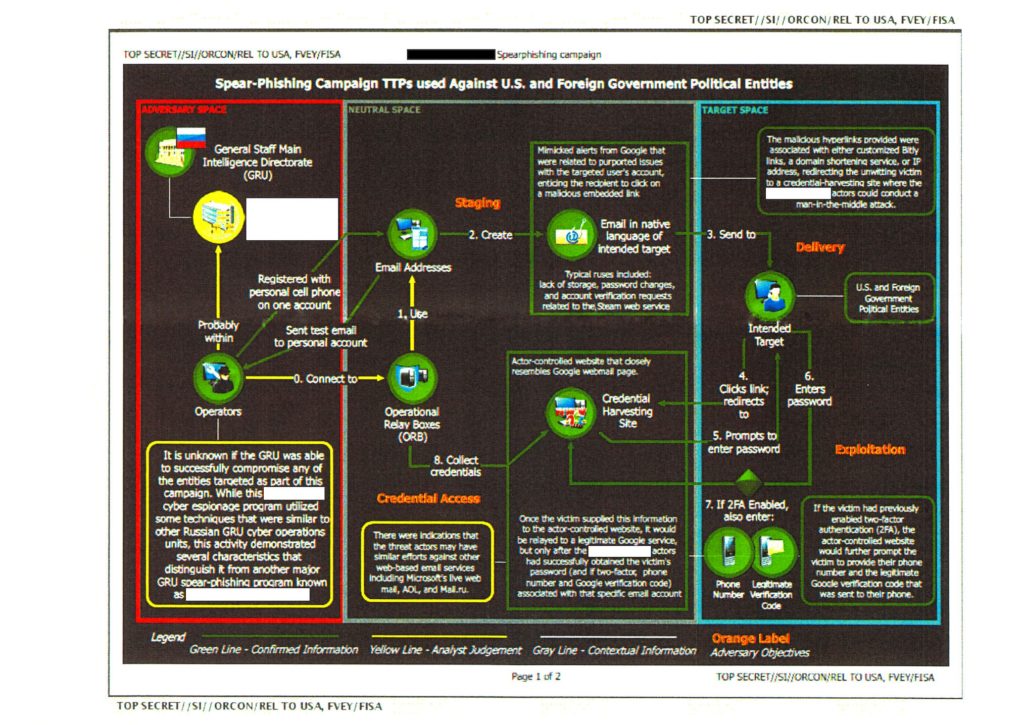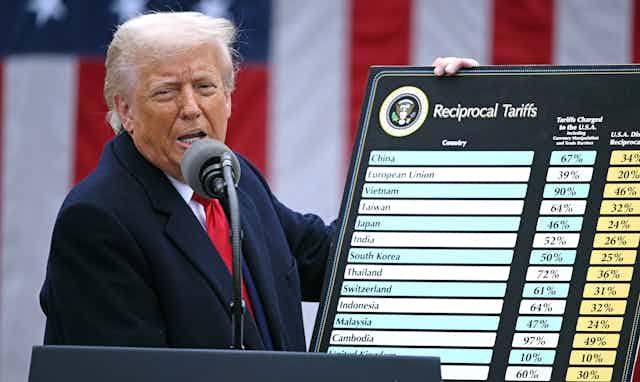
Today is my daughter’s 28th Birthday. This is the 3rd birthday she spends jailed. This is her 915th day in prison
for the “crime” of telling us about Russian attacks on our election.
Today is not a happy day.
We must raise the volume & demand her release. #FreeRealityWinner pic.twitter.com/5Misb84wMT— Billie J. Winner-Davis (@bjwinnerdavis) 4. desember 2019
By Kerry Howley, The original article appears in the December 25, 2017, issue of New York Magazine.
Reality would later tell the FBI that she worked in the drone program; as a crypto linguist, her job would likely have been to translate communications so that drone operators would know whom to target.
Reality was searched for thumb drives and cell phones every morning as she walked into the Whitelaw Building; her lunch, security guards noted as they pawed through it, was very healthy. She translated Farsi in documents relating to Iran’s aerospace program, work for which she had no particular affinity and which seems to have bored her. For those mornings when she did not feel like reading more documents about Iran’s aerospace program, she evidently had access to documents well outside her area of expertise. She had access, for example, to a five-page classified report detailing a Russian attempt to access American election infrastructure through a private software company. This would be, ultimately, the document she leaked. According to the analysis in the report, Russian intelligence sent phishing emails to the employees of a company that provides election support to eight states. After obtaining log-in credentials, the Russians sent emails infected with malware to over 100 election officials, days before the election, from what looked like the software company’s address.
In November, the man Reality referred to as “orange fascist” became president of the United States.
It bothered her that the screens at NSA Georgia were always tuned to Fox News, and it bothered her enough that she filed a formal complaint.
The document was marked top secret, which is supposed to mean that its disclosure could “reasonably be expected” to cause “exceptionally grave damage” to the U.S. Sometimes, this is true. Reality would have known that, in releasing the document, she ran the risk of alerting the Russians to what the intelligence community knew, but it seemed to her that this specific account ought to be a matter of public discourse. Why isn’t this getting out there? she thought. Why can’t this be public? It was surprising to her that someone hadn’t already done it.
Why do I have this job, Reality thought, if I’m just going to sit back and be helpless?
Reality folded up the document, stuffed it in her pantyhose, and walked out of the building, its sharp corners pressing into her skin. Later that day, President Trump fired James Comey, who had been leading an investigation into Russian election meddling. Reality placed the document in an envelope without a return address and dropped it in a standing mailbox in a strip-mall parking lot. Court documents suggest she also sent a copy to another outlet, though which one we don’t know.
When the envelope first arrived at the Intercept, there was considerable doubt that the document within it was real. The reporters decided, per standard journalistic practice, to contact someone who could verify its authenticity. What is less standard — what Thomas Drake calls “abhorrent” and Tim Shorrock calls “just shameful” and investigative journalist Barton Gellman called “egregious” — is for a reporter to provide a copy of the document itself, which could help reveal precisely who had provided it. On May 30, according to court filings, an unnamed reporter sent pictures of the document to a contractor for the U.S. government and told the contractor that they’d been postmarked in Augusta. The contractor initially said that the documents were fake but, after checking with someone at the NSA, reported that they were real. (The Intercept declines to comment for this story, though its parent company is contributing to Reality’s defense.)
On June 5, under the headline “Top Secret NSA Report Details Russian Hacking Effort Days Before 2016 Election” and bylined by four reporters, the Intercept published a scan of the leaked document with some redactions. The document it had incidentally given to the NSA — which had then sent it to the FBI — and which was now freely available on the internet, shows creases that suggest it was printed, folded, and carried, rather than submitted online. It contains watermarks indicating that it was printed on May 9, 2017, at 6:20 a.m., from a printer with the serial number 535218 or 29535218. The NSA knew, from its internal surveillance, that only six people had printed the document. Of those six, only one had emailed the Intercept asking for a transcript of a podcast.

Reality Winner has shown enormous courage in releasing a report in the public interest. Here in the UK, our own Trump has gone out of his way to suppress evidence supporting Russian interference and it galls me to see those benefiting from it gaining powerhttps://t.co/jIVeAZp5P2
— Brendan Thomas (@WelshBrendan2) 3. desember 2019




35 Comments
Pingback: ทดลองเล่นบาคาร่าเช็กชี่
Pingback: 다시보기 사이트 순위
Pingback: เว็บพนันบอล ไม่ผ่านเอเย่นต์
Pingback: nagaqq login
Pingback: relaxing jazz piano
Pingback: ข่าวกีฬา
Pingback: hpl laminate decorative
Pingback: ufabtb
Pingback: https://webcache.googleusercontent.com/search?q=cache:LLhoqU_p31AJ:https://www.outlookindia.com/outlook-spotlight/the-14-best-press-release-distribution-services-of-for-enhanced-visibility-and-reach--news-301112&hl=en&gl=uk
Pingback: AE Gaming บาคาร่าสด สุดเซ็กซี่
Pingback: angka togel hari ini
Pingback: dream gaming อัพเดท ฟีเจอร์ใหม่ เล่นง่ายขึ้นกว่าเดิม
Pingback: One day Phi Phi islands Trip from Phuket
Pingback: post
Pingback: นามบัตรด่วน
Pingback: พอต ราคาส่ง
Pingback: เว็บบอลสเต็ป ต้อง LSM99
Pingback: unieke reizen
Pingback: slot true wallet
Pingback: โรงงานผลิตสายรัดพลาสติก
Pingback: link
Pingback: ทดลองเล่นสล็อต pg
Pingback: ทดลองเล่นสล็อต ฟรี
Pingback: beautiful girls
Pingback: รับนำเข้าสินค้าจากจีน
Pingback: สล็อตเกาหลี
Pingback: ติดเน็ต ais
Pingback: รับชมฟุตบอลฟรีทุกคู่ แค่สมัครสมาชิกกับ ufalivesport
Pingback: เอเจนซี่ศัลยกรรมจีน
Pingback: sagame
Pingback: บาคาร่าเกาหลี
Pingback: Diaphragm Husky
Pingback: bgame777
Pingback: lottorich28
Pingback: รับทำ Work Permit